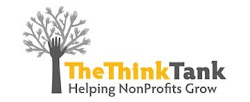By: Kyrsten Cazas, Community and Visibility Specialist
Last Friday, I had the opportunity to
accompany ThinkInk’s own Chief
Visibility Officer Vanessa Horwell
to Social Media Week Miami, where
she participated in the “Social Good
2.0: Leveraging the Power of Social Media to Promote and Grow Your Cause”
panel discussion. Vanessa, along with fellow panelists Daniella Levine of Catalyst Miami, Noel Hyatt of the Broward Education Communications Network, Elianne
Ramos of Latinos in Social Media (LATISM)
and panel moderator Lynn Ponder of WebCityGirls,
discussed how nonprofit organizations can benefit from the power and reach of
social media to effectively deliver their messages and fulfill their missions.
Take a look below at Vanessa’s responses to some of the
key questions asked during the panel.
Also be sure to
check out @ThinkInkPR and @ThinkTankPR for great photos and helpful tips from the
panel (I was live-tweeting) and you can even watch the full panel discussion here.
How should a
nonprofit pick which social media tools and channels to use?
The most important factor is identifying what kind of
exposure you are giving your nonprofit and that you are accurately portraying
it. Whatever you do on social media reflects your brand (yes, a nonprofit is a
brand), so ensure that your engagement style matches your organization’s brand,
goals and general attitude.
Also make sure you do your research, look at different
social media platforms and highlight the unique characteristics they have and
what they can offer your organization. This will help you map out how they can
help your nonprofit grow and get more exposure.
And instead of tapping in on all channels – because there
is such a thing as overexposure – find out which social media tools your target
audience is using today. One way to do this is by monitoring and tracking certain
keywords associated with your organization and its mission through free social
media monitoring tools. Also take the time to look back at what has and has not
worked for you in the past.
How do you build a
strong presence on Facebook, Twitter and YouTube?
“Fishing where the fish are,” nonprofit organizations can
reach their target audience by monitoring what other organizations they are following
and through what platform. Once you find the right platform, be active and communicate
with your ‘followers” regularly so you stay on top of their newsfeed and their
minds, by:
·
Writing blog posts about topics that
affect your nonprofit and those whom you serve;
·
Inviting those who have received your
services to contribute guest posts telling their own personal stories;
·
Creating videos to help bring your
message to life;
·
Conducting interviews and featuring
those who have great stories to tell or those who play a pivotal role in your
mission;
·
Sharing pictures and video from events
that you’ve held;
·
Posting updates regularly to keep your
presence known;
·
Asking questions to get your followers
talking about your organization.
The average
donation through social media increases each year. How can a non-profit get creative with
fundraising outreach in social media?
Each year the average donation given through social media
increases: in 2010 it was $38, jumping to $55 in 2011 and again in 2012, to
$59.
Here are some great tips for fundraising outreach using
social media from a PR perspective:
•
Raise more funds by keeping followers active and
regularly promoting fundraising events.
•
Give donors the ability to share their donation
activity on their own profiles.
•
Keep the process seamless; donors should be able
to give with no more than three clicks from your site.
•
Offer as many payment methods as you can.
•
Material rewards can help drive crucial funding.
For example, giving away apparel with your organization’s logo can really help
market your cause.
What are 5 things nonprofits
can do that they might not be aware of, such as remembering to seamlessly link offline
and online efforts.
·
Don’t get
overextended - Sometimes doing a little bit of everything leads to nothing
being well done. Look at your resources and let that guide you as to what
channels you choose.
·
Timing -
Tweets or Facebook posts should be scheduled to catch people in their ‘downtime.’
·
Ask
questions - If your post or tweet ends in a question mark versus a period,
you can expect about five times the amount of likes, comments, shares,
retweets, etc. This is because social media isn’t about monologue - it’s
about dialogue. So instead of just making a statement, ask a question and
invite your audience to join a conversation.
·
Be
responsive - Respond to
questions, tweets, posts from followers in real time.
·
Content -
Your audience may not care about your organization as much as the cause you
represent, try and balance out your updates by focusing more on the cause/goals
your organization is working towards.
·
An Extra
Tip: Collect data - Use social media to collect email addresses through
online sign-ups this will give you more contacts and show you who is truly interested
in your organization and your cause.
Do you agree with Vanessa when it comes to social media
and using it as a marketing tool for nonprofit organizations? Comment below
with your thoughts and additional tips, we’d love to hear from you!








